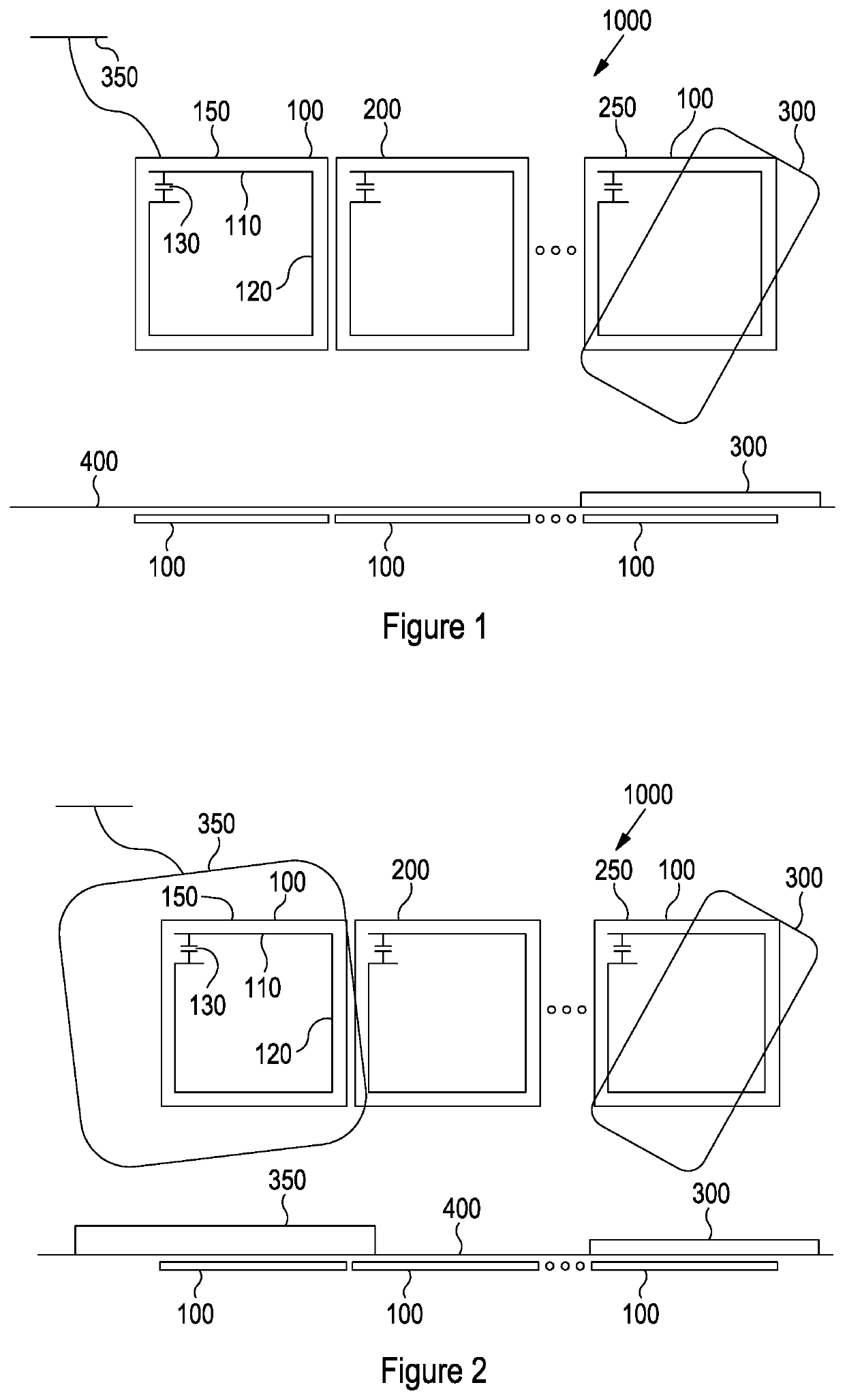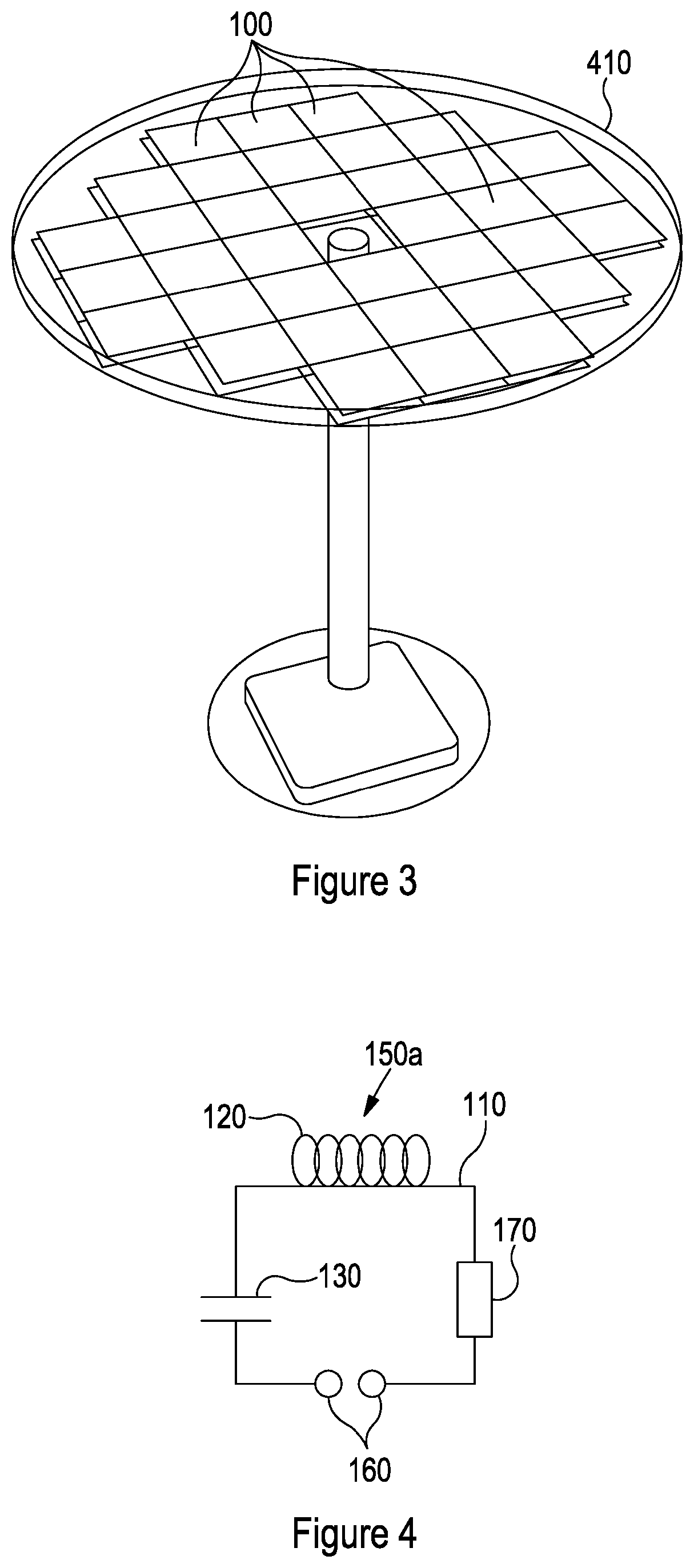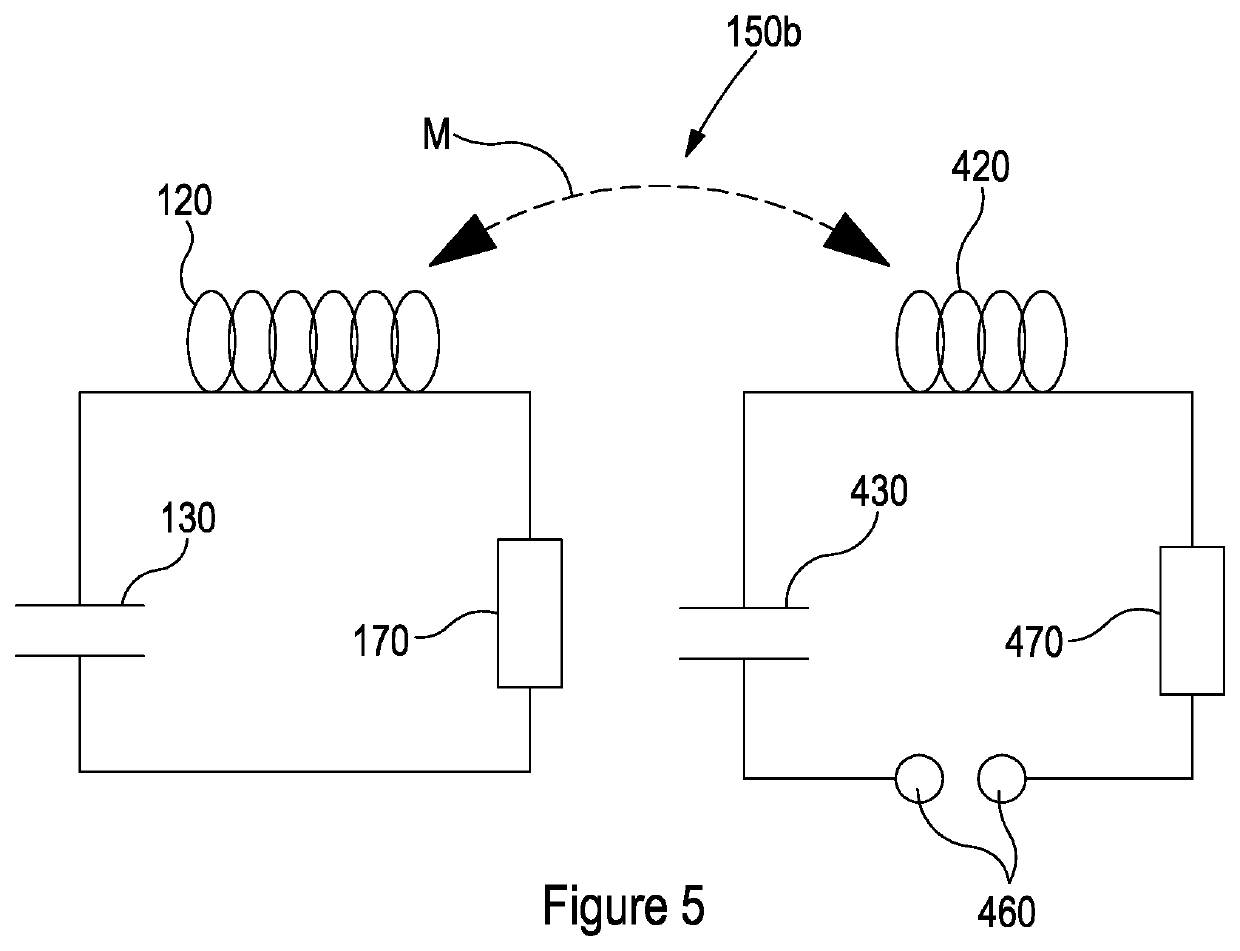Magnetoinductive wave control
- Summary
- Abstract
- Description
- Claims
- Application Information
AI Technical Summary
Benefits of technology
Problems solved by technology
Method used
Image
Examples
Embodiment Construction
[0142]Embodiments will now be described, purely by way of example, with reference to the accompanying drawings, in which:
[0143]FIG. 1 is a system for wireless power communication comprising a 1D array of power transfer elements, in which current is directly injected at the input element;
[0144]FIG. 2 is a system similar to that of FIG. 1, but in which current is provided wirelessly to the input element;
[0145]FIG. 3 is a a system for wireless power transfer, applied to a coffee table;
[0146]FIG. 4 is an equivalent circuit for an input element at which current is directly injected;
[0147]FIG. 5 is an equivalent circuit for an input element at which current is excited by inductive coupling with a further resonator;
[0148]FIG. 6 is a system for wireless power transfer, applied to the underside of a table, for providing power to target device on top of the table;
[0149]FIG. 7 is a generalised equivalent circuit for a controllable element, comprising a primary resonator and a secondary resonat...
PUM
 Login to View More
Login to View More Abstract
Description
Claims
Application Information
 Login to View More
Login to View More - R&D
- Intellectual Property
- Life Sciences
- Materials
- Tech Scout
- Unparalleled Data Quality
- Higher Quality Content
- 60% Fewer Hallucinations
Browse by: Latest US Patents, China's latest patents, Technical Efficacy Thesaurus, Application Domain, Technology Topic, Popular Technical Reports.
© 2025 PatSnap. All rights reserved.Legal|Privacy policy|Modern Slavery Act Transparency Statement|Sitemap|About US| Contact US: help@patsnap.com



